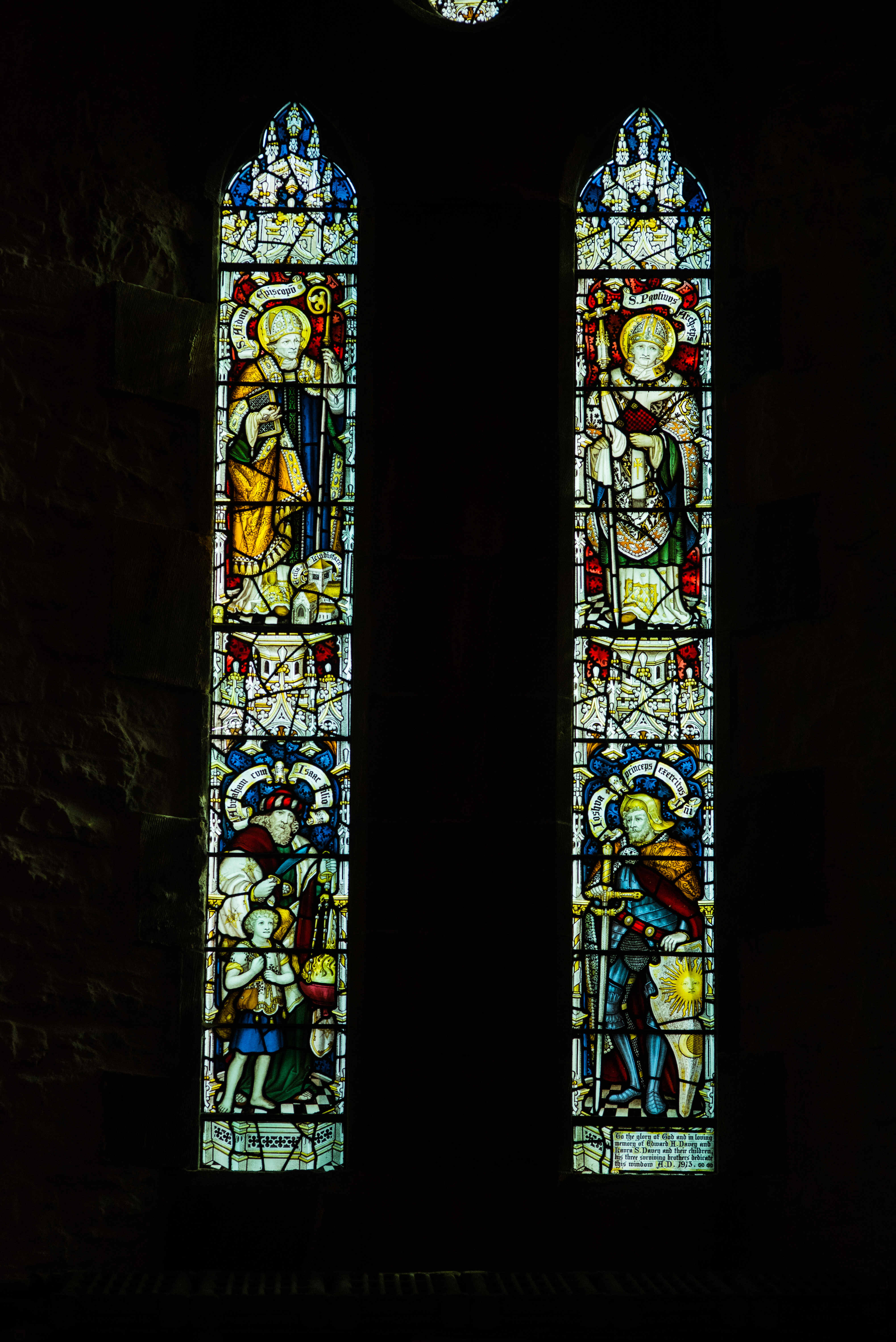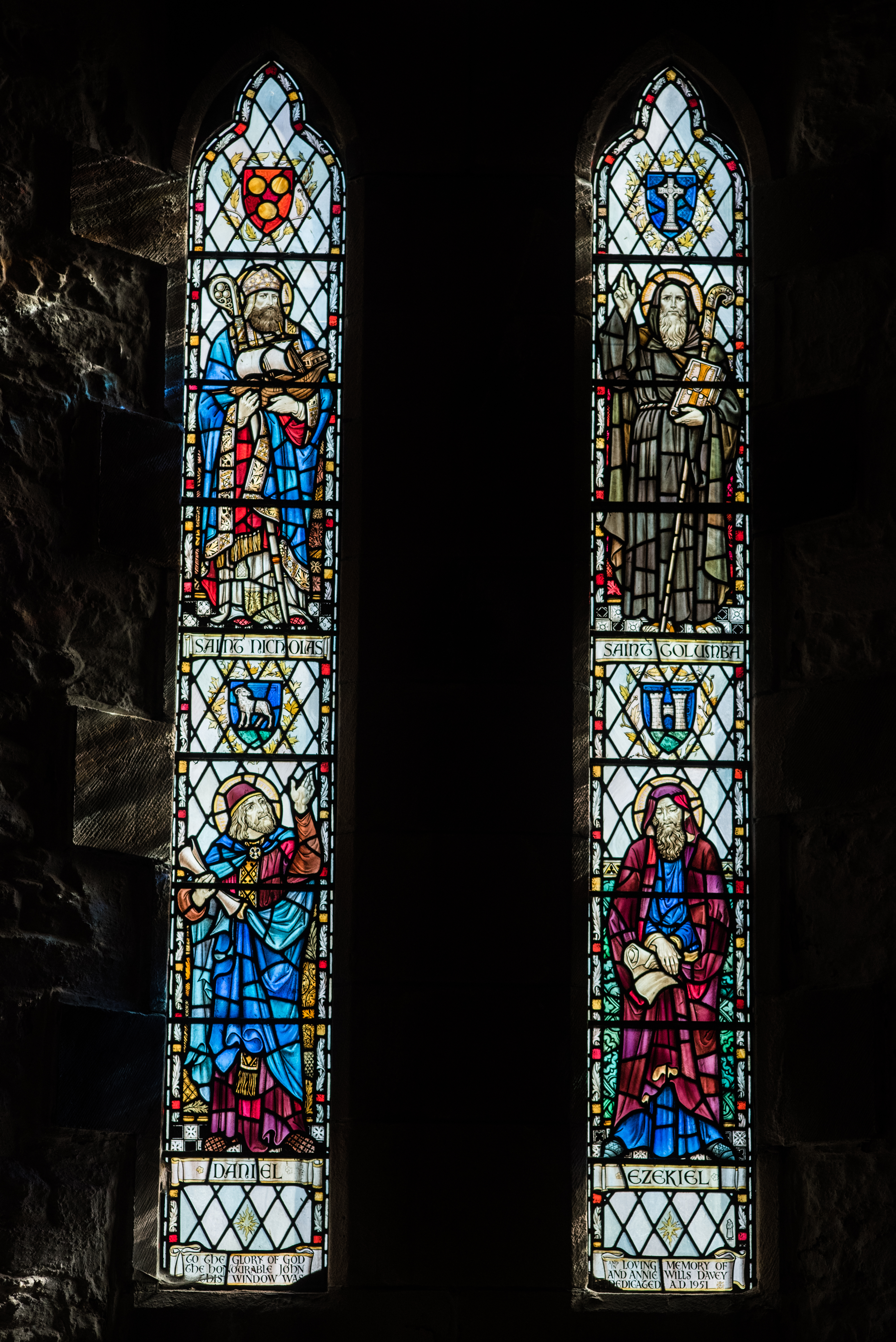Virtual Tour
This Tour is useful if you are walking through the Cathedral,
or visiting from your own home!
The South Nave & Aisle
Proceeding westward along the South Aisle, you will see six windows with double lancets topped by quatrefoils; all but the fifth commemorate deceased members of the Davey family.
The first window (1909) shows the theologian-saints Jerome and Anselm and the Old Testament patriarchs Noah and Moses.
The second window (1913) depicts the holy bishops Paulinus and Aidan, early missionaries to the English, and the patriarchs Joshua and Abraham (with Isaac).
The third (1933) commemorates the prophets Isaiah and King David, together with the martyr saints Lawrence and Alban. The fourth of the Davey memorial series (1951), represents the prophets Daniel and Ezekiel, along with Nicholas and Columba, confessors; note the Powell "White Friar" in this window and the next.
The next window, given by the Cathedral Men's Bible Class to mark sixty years of service to the Mission to Seamen (1947), depicts the virgin martyrs Cecilia and Catherine and the Western Church Fathers Jerome and Gregory the Great.
The end window on the south aisle, the last of the Davey memorials (1969), shows the saints Oswald and Edward the Confessor (early English kings), and the Fathers of the Eastern Church John Chrysostom and Basil of Caesarea.
The Nave has six pillars on each side, twelve in all, representing the Twelve Apostles. Typical of Gothic architecture, the capitals of each column vary; the most obviously different is the third small pillar of the South aisle, which is known as the "Judas Pillar." Because the dog-tooth pattern of the upper moulding can be considered a crown of thorns, it has also been called the "Christ Pillar."
The Sculpted Heads on the pillars represent individuals prominent in the Diocese, Nation and Empire during the Cathedral's construction. The heads on the inner side of the four westernmost pillars on the north side have been thought to depict the first four Bishops of Newfoundland, while other heads are thought to represent such figures as Queen Victoria, Prince Albert, King Edward VII and Queen Alexandra.
The white, fine-grained, ornamental rock used for the pillars, arches and windows is sandstone from the Giffnock quarries near Glasgow, Scotland. The darker, coarser stone of the walls is Newfoundland bluestone quarried from the Southside Hills of the city of St. John's.
Next on the Tour: The West Window & Baptistry





